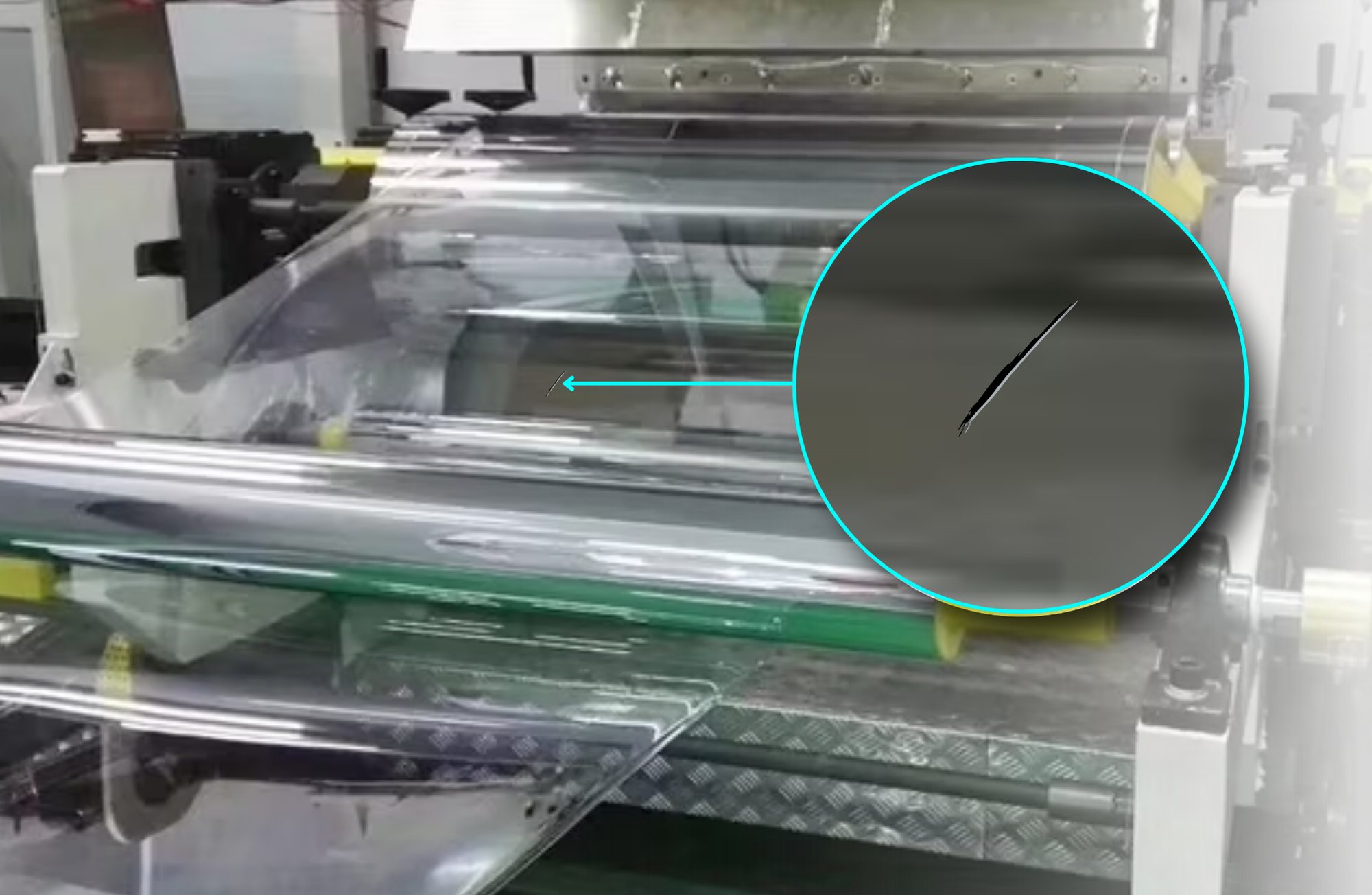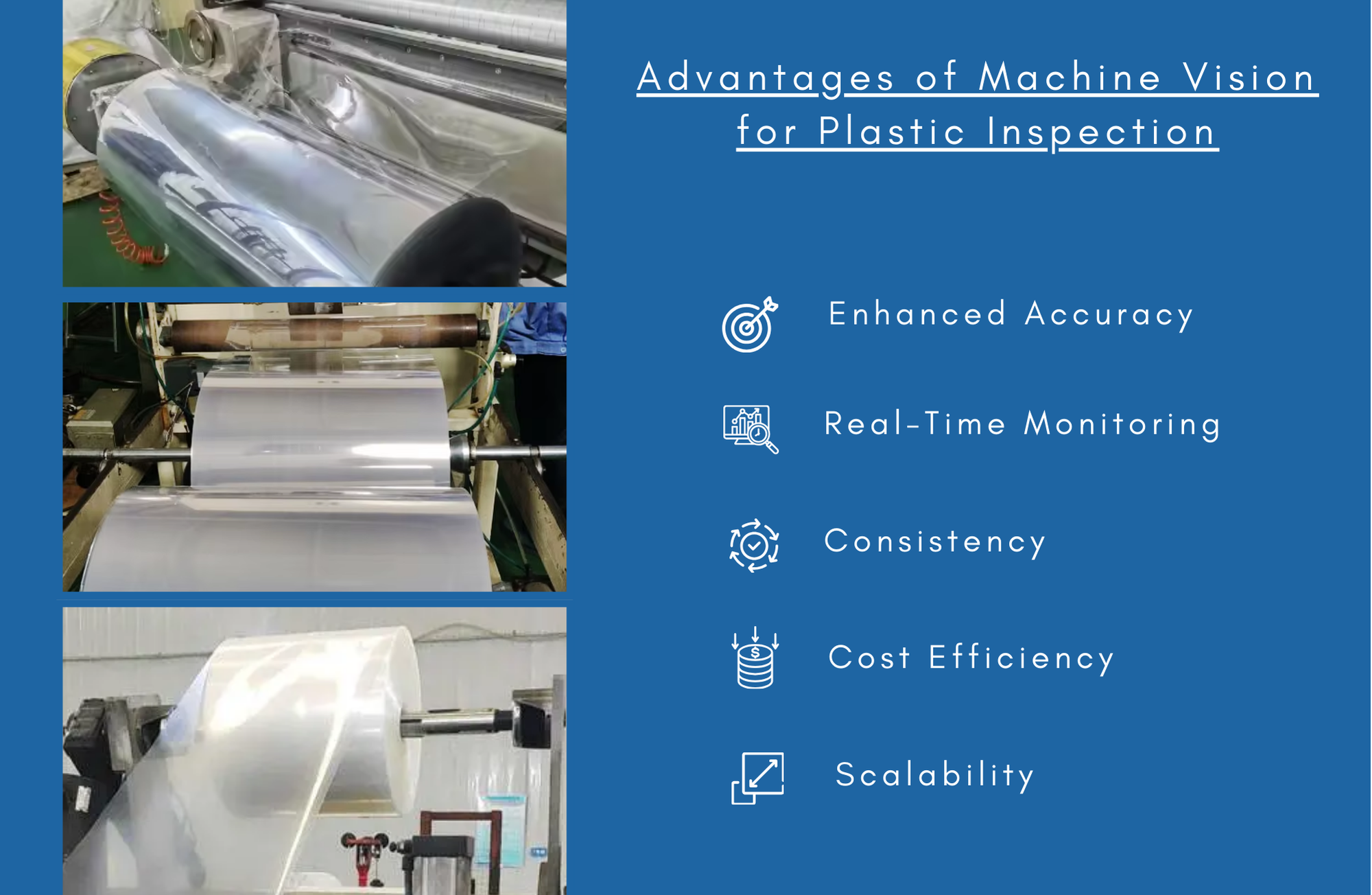How to get Defects Visible on Plastic Surfaces and Transparent Sheets in Machine Vision Imaging
Published on: Dec 18, 2024

Written by: Soumen das
How to get Defects Visible on Plastic Surfaces and Transparent Sheets in Machine Vision Imaging
Plastic surfaces, films, and transparent or semi-transparent sheets are widely used in industries such as packaging, electronics, automotive, and healthcare. However, these materials often encounter defects such as black spots, pinholes, scratches, and contamination during manufacturing. Detecting such defects is critical for maintaining product quality and performance, but the unique optical properties of plastic materials make this task particularly challenging.
Machine vision imaging, when combined with appropriate lighting techniques and AI-driven defect detection algorithms, offers a reliable solution for making defects visible and ensuring thorough inspection. This article explores the challenges of inspecting transparent and semi-transparent materials and the strategies to enhance defect visibility for effective machine vision imaging.

Challenges in Inspecting Plastic Surfaces and Transparent Sheets
-
Low Contrast Defects:
Defects such as black spots often have low contrast against the plastic surface, making them hard to detect in standard images. -
Transparency and Translucency:
Transparent or semi-transparent materials allow light to pass through, reducing the visibility of surface-level defects. -
Reflections and Glare:
Shiny or glossy surfaces can create glare, further obscuring defects during imaging. -
Material Thickness Variations:
Variations in material thickness can lead to uneven lighting and imaging results, complicating defect detection. -
High-Speed Production:
Plastic sheets and films are often produced in high-speed continuous processes, requiring real-time inspection.
Techniques to Make Defects Visible in Machine Vision Imaging
1. Optimized Lighting Techniques
Lighting plays a crucial role in defect detection, particularly for materials like plastic where defects are hard to see.
-
Backlighting:
-
Ideal for detecting defects such as pinholes, black spots, and contamination in transparent or semi-transparent materials.
-
A uniform light source placed behind the material highlights defects as dark spots or inconsistencies.
-
-
Dark Field Illumination:
-
Effective for detecting surface-level defects like scratches and contamination.
-
Light is directed at a shallow angle, making defects scatter light and appear bright against a dark background.
-
-
Coaxial Lighting:
-
Helps reduce glare on shiny plastic surfaces while enhancing visibility of defects like black spots.
-
A beam splitter ensures light is uniformly directed and reflected back to the camera.
-
-
Polarized Lighting:
-
Reduces reflections and enhances contrast for defects on glossy surfaces.
-
Polarizing filters align the light waves, minimizing glare and improving defect visibility.
-
-
Multi-Angle Lighting:
-
Illuminates the material from multiple directions, ensuring comprehensive defect detection even on textured or uneven surfaces.
-
2. Advanced Imaging Systems
Selecting the right camera and imaging system is crucial for capturing defects on plastic surfaces.
-
High-Resolution Cameras:
-
Capture fine details, ensuring that even small defects like black spots are detectable.
-
-
Line-Scan Cameras:
-
Ideal for high-speed production lines, capturing detailed images line by line for continuous inspection.
-
-
Multi-Spectral and Hyperspectral Cameras:
-
Analyze materials across different wavelengths to detect defects that may not be visible in the standard visible spectrum.
-
3. AI-Powered Defect Detection
Artificial Intelligence (AI) enhances defect detection by analyzing complex patterns and improving imaging results.
-
Pattern Recognition:
-
AI models trained on defect datasets can identify black spots and other anomalies with high precision.
-
-
Contrast Enhancement:
-
AI algorithms enhance the contrast of images, making low-visibility defects more apparent.
-
-
Adaptive Thresholding:
-
Automatically adjusts detection criteria based on variations in material properties or lighting conditions.
-
-
Defect Classification:
-
AI categorizes defects by type, size, and location, providing actionable insights for quality control.
-
4. Vibration and Motion Control
For high-speed production lines, stable imaging is critical to detect defects accurately.
-
Roller Mechanisms:
-
Stabilize plastic sheets or films, reducing vibrations and ensuring consistent imaging.
-
-
Synchronized Inspection Systems:
-
Cameras and lighting are synchronized with material movement to capture clear, distortion-free images.
-
5. Environmental Adjustments
Maintaining a controlled inspection environment improves imaging consistency and defect visibility.
-
Dust-Free Environment:
-
Ensures that external particles do not obscure defects during imaging.
-
-
Temperature Control:
-
Prevents heat-induced distortions in transparent or semi-transparent materials.
-
Applications of Machine Vision Imaging for Plastic Materials
-
Packaging Films:
-
Detecting black spots, pinholes, and scratches on films used in food and pharmaceutical packaging.
-
-
Electronics Industry:
-
Inspecting plastic components for scratches or contamination that could impact performance.
-
-
Automotive Components:
-
Ensuring defect-free plastic panels, trims, and protective films.
-
-
Medical Devices:
-
Verifying the integrity of transparent plastic components used in syringes, IV bags, and diagnostic tools.
-
Advantages of Machine Vision for Plastic Inspection
-
Enhanced Accuracy:
-
Detects even the smallest defects, such as black spots, with micron-level precision.
-
-
Real-Time Monitoring:
-
Enables immediate corrective actions, reducing waste and production downtime.
-
-
Consistency:
-
Provides objective, repeatable results, eliminating variability in manual inspections.
-
-
Cost Efficiency:
-
Reduces labor costs and material waste by automating the inspection process.
-
-
Scalability:
-
Adapts to high-speed production lines and diverse product specifications.
-

Intelgic’s Expertise in Plastic Surface Inspection
At Intelgic, we specialize in designing and deploying custom Automated Optical Inspection (AOI) systems for plastic surface and film inspection. Our solutions combine advanced imaging technologies, AI-powered defect detection, and optimized lighting to make even the most challenging defects visible.
Why Choose Intelgic?
-
Tailored Solutions:
Systems designed to meet the specific needs of your materials and production processes. -
Cutting-Edge Technology:
Incorporates high-resolution cameras, advanced lighting, and AI-driven analytics. -
Comprehensive Support:
From consultation to implementation and maintenance, we ensure seamless integration and operation.
Detecting defects like black spots on plastic surfaces and transparent sheets requires innovative imaging and inspection strategies. By combining advanced lighting techniques, high-resolution cameras, and AI-powered analysis, manufacturers can achieve reliable and efficient defect detection, even in challenging materials.
Intelgic’s expertise in custom AOI systems ensures that your inspection process is optimized for accuracy, speed, and scalability. Contact Intelgic today to learn how our solutions can revolutionize your plastic surface inspection processes.

